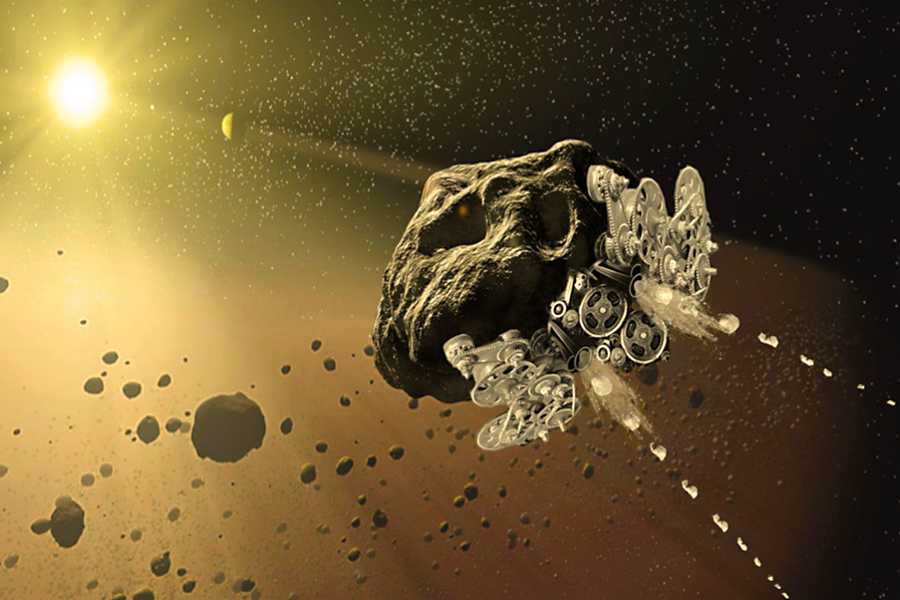Can asteroids be turned into self-driving spaceships?
Loading...
A private company is aiming to break into the developing asteroid mining business with a concept that could turn the minor planetary objects into rudimentary spacefaring vessels.
The Mountain View, Calif.-based Made In Space, Inc., responsible for the first 3D printer to function in zero gravity conditions, will use its additive manufacturing expertise and backing from NASA to continue work on its Project Reconstituting Asteroids into Mechanical Automata (RAMA). That initiative “turns asteroids into basic spacecraft capable of moving themselves to useful locations in space,” according to a blog post by Made In Space co-founder and chief technology officer Jason Dunn.
NASA itself is already invested in the further study of the near-Earth objects (NEOs), and even aims to move a portion of an asteroid into Earth's orbit in the near future. And with the once-theoretical asteroid mining business now on its way to becoming an international industry, utilizing the cosmic bodies for the transport and harvesting of resources is now a practical interest.
The premise of the RAMA concept first involves delivering a manufacturing-capable “Seed Craft” to the prevalent planetoids. After the Seed Craft’s arrival, materials taken from the NEO’s surface will be 3D-printed to build basic mechanical instruments needed for space flight. Made In Space hopes that RAMA can address “the need for space resources” that will arise as asteroid harvesting and human exploration into deeper regions of space become a reality.
“Eventually, the asteroid itself becomes an autonomous, mechanical, free-flying spacecraft,” that “would be programmed to slowly alter its path over time,” according to Mr. Dunn’s blog. The end result: a new asteroid machine developed with in situ resource utilization that, after completion, can send the Seed Craft to another asteroid, while propelling itself to nearby human outposts for mining.
Current space shuttles and probes must be sent through the cosmos with precise guidance and extensive electronic propulsion systems. The RAMA architecture, however, would allow NEOs to function without constant human oversight, thanks to a momentum system inspired by 2nd century BC machinery.
“At the end of the day, the thing that we want the asteroid to be is technology that has existed for a long time,” Dunn told Space.com. “The question is, ‘Can we convert an asteroid into that technology at some point in the future?’ We think the answer is yes.”
The plan would be more efficient than sending individual missions, manned or unmanned, to NEOs targeted for harvesting. Made In Space hopes its background in space-based additive manufacturing processes could help turn asteroid mining's “crazy visions of the future ” into reality.
Made In Space doesn’t expect RAMA-type vessels to hurtle through space for 20 to 30 years, giving time for advancement in human space travel and colonization and growth in the asteroid mining business. In the meantime, Dunn sees viability in the concept’s use on Earth as well.
“You could build infrastructure in remote locations somewhat autonomously, and convert resources into useful devices and mechanical machines,” he said, according to Space.com. “This actually could solve some pretty big problems on Earth, from housing to construction of things that make people's lives better.”
Backing for further development of the RAMA concept comes from NASA’s Innovative Advanced Concepts Program, from which the space agency provides thousands of dollars to fund months’ worth of research for “visionary ideas that could transform future NASA missions.”








